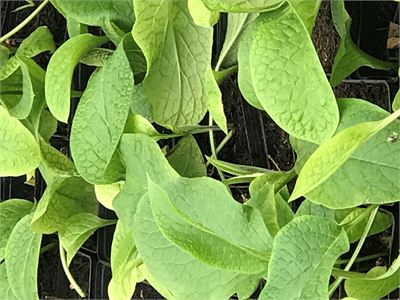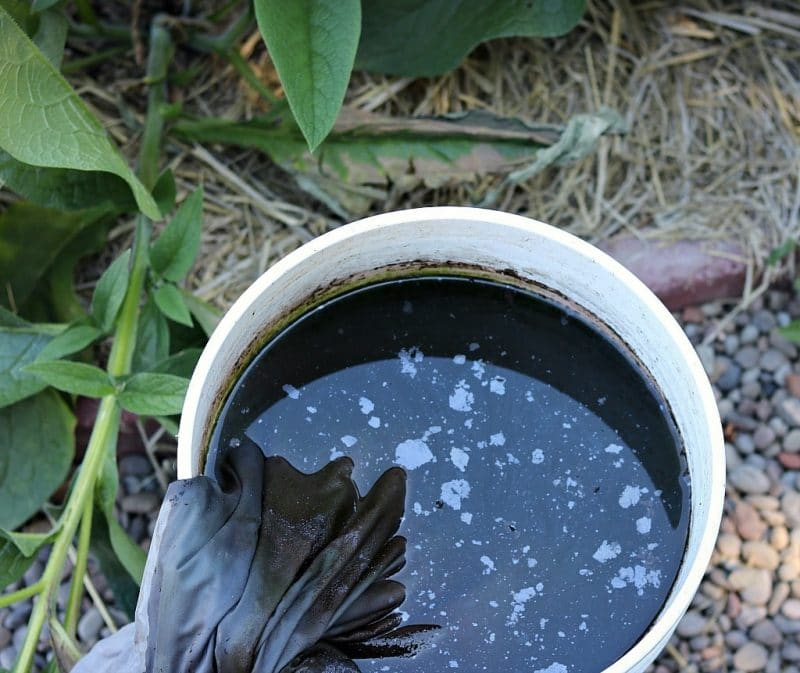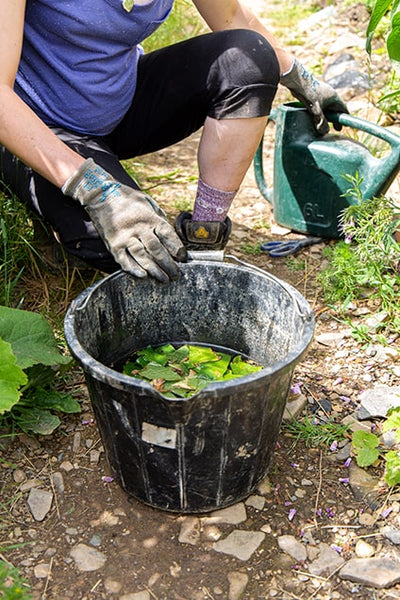Comfrey (Symphytum species) is a versatile and easy-to-grow plant that has been valued for its medicinal and practical uses for over 2,400 years. Native to Europe and Asia, comfrey was originally a woodland wildflower, and it remains a valuable addition to gardens today. While the plant contains pyrrolizidine alkaloids that can be toxic when ingested, it has numerous benefits when used responsibly. Here are seven of the best ways to use comfrey in your garden and home.
1. Enhance Shady Areas
Comfrey thrives in partial shade, making it an excellent choice for filling in bare spots under trees or along shaded garden edges. Its broad, textured leaves create lush, fountain-like clusters that add beauty and texture to your garden. While it may not be ideal for formal borders, comfrey naturalizes well in wildflower meadows and works beautifully to anchor pollinator gardens. If you’re worried about invasiveness, opt for the ‘Bocking 14’ variety, which is sterile and doesn’t reseed.
2. Boost Your Compost
Comfrey is a fantastic biomass plant that can help bulk up compost. Its leaves are packed with nutrients, especially potassium, which benefits many garden plants. When adding comfrey to compost, you can cut the leaves multiple times a year without harming the plant, making it a continuous source of organic material. Simply gather the leaves and layer them into your compost bin to enrich your soil.

3. Support Pollinators
Comfrey is a magnet for bees, especially bumblebees, which feed on its nectar. The flowers, rich in nectar, attract not only bees but also butterflies. By incorporating comfrey into your garden, you help support local pollinator populations. Additionally, cutting back spent flower spikes encourages the plant to rebloom throughout the summer, providing a longer season of food for pollinators.

4. Natural Mulch
Comfrey’s large leaves make it an excellent material for mulching. Placing chopped comfrey leaves around young fruit trees or other plants helps retain moisture, suppress weeds, and add nutrients to the soil as it decomposes. For added effectiveness, combine comfrey leaves with a layer of straw or hay on top. This double mulch method provides excellent soil enrichment and moisture retention.
5. Make Comfrey Fertilizer
Comfrey can be fermented into a potent liquid fertilizer, known as com-fert. To make it, chop fresh leaves and place them in a bucket, weigh them down with a brick, add some water, and loosely cover. Allow the mixture to ferment for a few weeks, stirring occasionally. Once the strong odor subsides, strain the liquid and dilute it with water (at least 1:15) to use as a foliar feed for plants. This nutrient-rich fertilizer is an excellent way to boost your garden’s health.

6. Create a Healing Poultice
Comfrey has earned the nickname “knitbone” due to its traditional use in healing injuries. It is believed to speed up healing by promoting circulation and reducing inflammation. To make a comfrey poultice, crush fresh comfrey leaves (or use dried roots) and apply them to sprains, bruises, or muscle strains. For my own first-aid kit, I dry comfrey roots and store them for emergency use, ensuring that I’m always prepared for potential injuries.
7. Comfrey Tea for Houseplants
Comfrey can also be used to make a simple, nutrient-rich tea for your houseplants. To create the tea, fill a jar with 2 inches of crumbled dry comfrey leaves, add water, and let it sit overnight. Strain out the leaves, and you’ll have a mild, natural liquid fertilizer. Using this tea during the winter months helps keep your indoor plants healthy and vibrant.

Comfrey is truly a powerhouse in the garden and home. Whether you’re looking to improve your compost, support pollinators, or heal an injury, this resilient plant has something to offer. Always use it with care, especially when handling its medicinal properties, and enjoy its many benefits for years to come.
